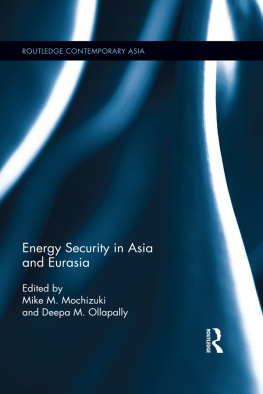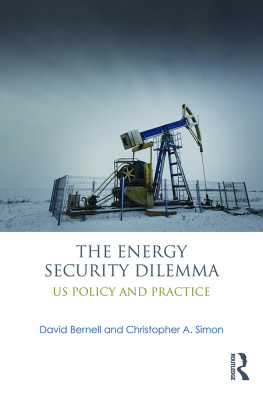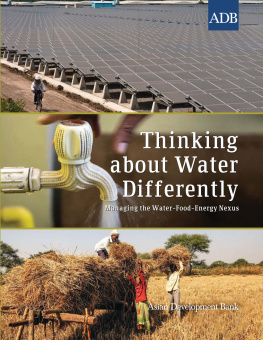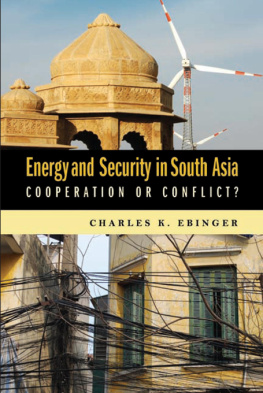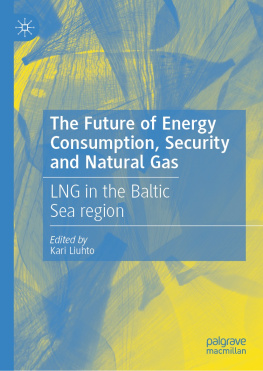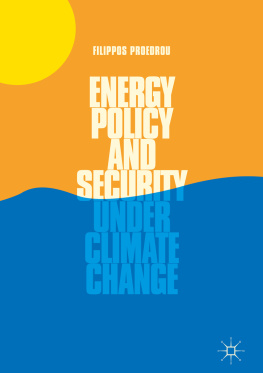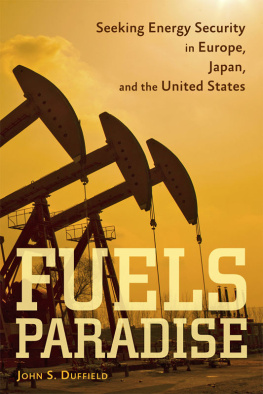Preface
Much has been written about the evolving energy situation in the world, a situation that affects practically all contentious international situations in the world. In Asia, energy resources and demands are vital issues to Russia, Japan, the Koreas, China, the nations of Southeast Asia, and those of the subcontinent. Central Asia promises to be a future energy breadbasket, while Africa is looming large in that respect.
With the increasing prominence of energy supply and demand come issues of energy security. The availability and affordability of energy resources have hitherto been concentrated in Southwestern Asia and the Middle East, long distances from the primary customers in East Asia. These distances are traversed by seagoing tankers steaming over sea lines of communications (SLOCs).
These sea lines offer much risk of interruption from many different sources. Negating these threats and securing the SLOCs is a traditional naval mission, one that has in recent history been carried out by the U.S. Navy. The United States is increasingly absorbed in the global war on terror, however, and its navy is shrinking in size, just as China grows in power and the issue of energy security grows in importance. Hence, most Asian nations are expanding and modernizing their naval forces, led by Japan, South Korea, China, and India.
This book addresses energy security from these two perspectives: the increasing importance of energy security to the nations of Asia, and the regional drive to develop the naval power to ensure that security.
The author relied heavily on government, industry, and press reports, as well as on interviews with Asian and U.S. civilian officials, naval officers, and energy industry representatives. Conclusions are based on multiple sources in most cases and wherever possible.
Civilian, military, and industry officials who discussed energy and naval issues with the author are not named, to protect their anonymity. I owe a great debt to the colleagues, scholars, and experts who read all or parts of this manuscript. At the risk of unintentionally omitting some of them, I must in particular note the assistance of Dr. William Hill, Dr. Philip Saunders, and Ms. Susan Sherwood of the National Defense University. Dr. Sarah Mikel and her wonderful staff at the University's superb library were untiring in their assistance. Dr. Paul H.B. Godwin, despite his emeritus status, continues to serve as my academic sea daddy, while retired Rear Admiral Eric McVadon surveyed the manuscript with his unsurpassed editorial eye. Valuable advice was also offered by two former students, Colonel William Barnett, USA, and Mr. Stephen Schwartz, as well as by Mr.. Dr. Cynthia Watson provided invaluable advice and friendship.
I alone of course bear the responsibility for any errors of omission or commission. Furthermore, this manuscript reflects my personal views and not those of the National Defense University or any other agency of the U.S. Government.
ABBREVIATIONS
AAW
Anti-Aircraft Warfare
ADB
Asia Development Bank
AFP
Agence France Presse
AMW
Amphibious Warfare
APEC
Asia-Pacific Economic Conversation
ARF
ASEAN Regional Forum
ASEAN
Association of Southeast Asian Nations
ASROC
Anti-Submarine (Torpedo) Rocket
ASUW
Anti-Surface Warfare
ASW
Anti-Submarine Warfare
Bbbl
Billion Barrels
Bbl
Barrel
Bcf
Billion Cubic Feet
BSP
Brunei Shell Petroleum
BTM
Billion Ton Miles
BTU
British Thermal Unit
CLCS
UN Commission on the Limits of the Continental Shelf
CNOOC
China National Offshore Oil Corporation
CS
Continental Shelf
CSI
Container Security Initiative
CSIST
Chung Shan Institute of Science and Technology
CTAP
Counter-Terrorism Action Plan
CTTF
Counter-Terrorism Task Force
CZ
Contiguous Zone
DOA
UN Division on Ocean Affairs and the Law of the Sea
DWT
Dead Weight Tons
EEZ
Exclusive Economic Zone
EW
Electronic Warfare
EWG
Energy Working Group
FAO
UN Food and Agricultural Organization
FPCC
Formosa Petrochemical Company
FTA
Free Trade Agreement
GCC
Gulf Cooperation Council
GDP
Gross Domestic Product
Grafimar
Geographic Information System
GTCL
Gas Transmission Company Ltd.
GWOT
Global War on Terrorism
HP
Horsepower
ICBM
Inter-Continental Ballistic Missile
ICC
International Chamber of Commerce
ICPO
International Criminal and Police Organization
IGTS
Integrated Gas Transportation System
IHO
International Hydrographic Organization
ILO
International Labor Organization
IMB
International Maritime Bureau
IMO
International Maritime Organization
INTERPOL
International Police Organization
ISA
International Seabed Authority
ISPS
International Ship and Port Security
ITLS
International Tribunal for the Law of the Sea
ITS
Integrated Transmission System
JDA
Malaysia-Thailand Joint Development Area
JI
Jemaah Islamiya
JMSDF
Japanese Maritime Self-Defense Force
KCG
Republic of Korea Coast Guard
Km
Kilometer
KNOC
Korea National Oil Corporation
KOGAS
Korea Gas Company
Kt
Knots
LCM
Landing Craft Mechanized
LCU
Landing Craft Utility
LNG
Liquefied Natural Gas
LPD
Landing Platform Dock
LSD
Landing Ship Dock
LST
Landing Ship Tank
MANPADS
Man-Portable Air Defense System
MBTU
Million Btus
Mcf
Million Cubic Feet
MILF
Moro Islamic Liberation Front
MIW
Mine Warfare
Mmbbl
Million Barrels
MSEG
Maritime Security Experts Group
NATO
North Atlantic Treaty Organization
NIDS
National Institute for Defense Studies
NKN
North Korean Navy
Nm
Nautical Mile
OPEC
Organization of Petroleum Exporting Countries
OPIC
Overseas Petroleum Investment Corporation
PETROBANGLA
Bangladesh Oil, Gas, and Mineral Corporation
PGU
Peninsular Gas Utilization
PK
PetroKazakhstan
PLA
People's Liberation Army
PLAAF
People's Liberation Army-Air Force
PLAN
People's Liberation Army-Navy
PRC
People's Republic of China
PSI
Proliferation Security Initiative
ReCAAP
Regional Cooperation Agreement on Combating Piracy and Armed Robbery Against Ships in Asia
RMAS
Regional Movement Alert System
RMSI
Regional Maritime Security Initiative
ROC
Republic of China
SAARC
South Asian Association for Regional Cooperation
SAR
Special Administrative Region or Sea and Air Search and Rescue
SEANFZ
Southeast Asia Nuclear Weapons Free Zone
SEATO
Southeast Asia Treaty Organization
SELB
Strategic Energy Land Bridge
SLOC
Sea Line of Communication
SOLAS
International Convention for the Safety of Life At Sea
SOM
Senior Officials Meeting
SSM
Anti-Surface Ship Missile
SSR
Soviet Socialist Republic
STAR
Secure Trade in the APEC Region
Su
Sukoi
TAPI
Turkmenistan-Afghanistan-Pakistan-India Pipeline
Tcf
Trillion Cubic Feet
TCG
Taiwan Coast Guard
TPTWG
Transportation Working Group
UAE
United Arab Emirates
UN
United Nations
UNCLOS
United Nations Convention on the Law of the Sea
VSP
Vietsovpetro
VSTOL
Vertical/Short Takeoff and Landing
WCO
World Customs Organization
WMD
Weapons of Mass Destruction
INTRODUCTION
This book is about energy and the freedom of the seas, which is very much an international responsibility. That freedom is required to ensure law and order at sea with free and safe movement of shipping, and nations able to pursue their maritime interests and mange their resources in a manner which is agreed and accepted by other nations.
Specifically, it investigates the military aspects of energy security in maritime Asia. This vast area includes the world's second and third largest consumers of energy, China and Japan, and depends on very long sea lines of communication for commerce, especially energy imports. The Asian landmass also includes many of the world's most prolific energy producers, including Russia and the countries of Southwest and Central Asia. Comparing transport costs for China supports the fact that no form of transporting oil is more important than the sea: the cost per barrel per 1,000 kilometers (.62 statute miles) is $.163 by tanker, $.793 by pipeline, and $7.19 by train.



